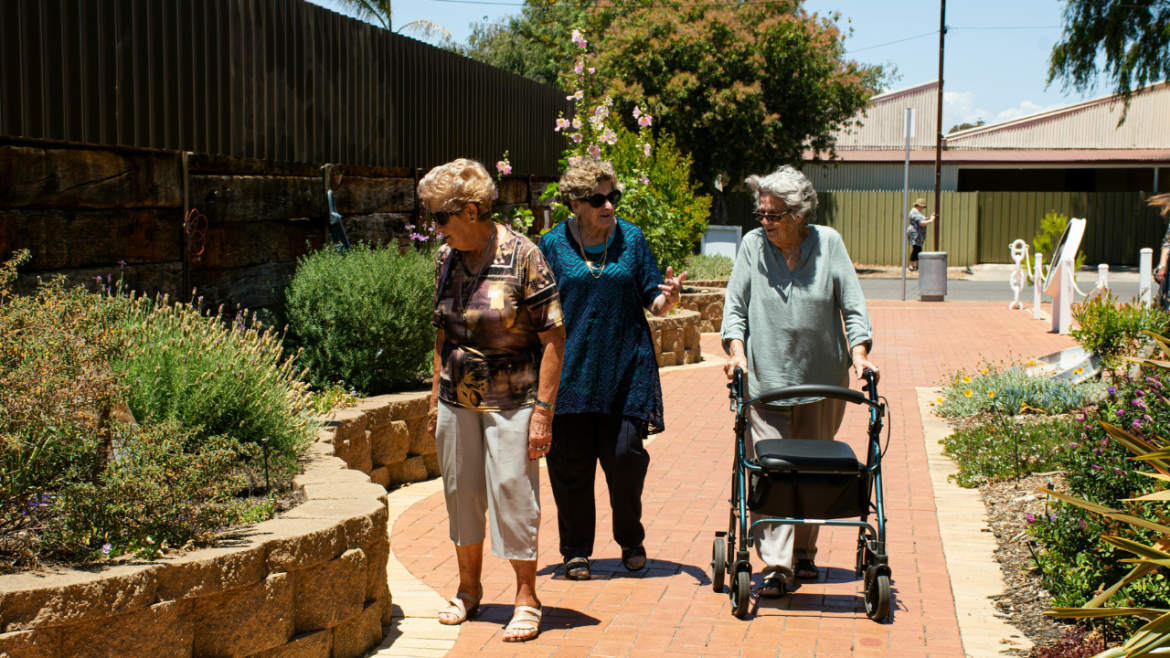What Is A Mobility Aid?
Did you know that Leading Edge Senior Care has a Dementia Support Group? We meet monthly in Mesa. For more details <click here>
What Is A Mobility Aid?
As seniors age, maintaining independence and quality of life becomes increasingly important. Mobility aids are essential tools that help seniors stay active and self-sufficient.
These devices come in various forms, each designed to address specific needs and enhance the user’s ability to move around safely and comfortably.
Types of Mobility Aids
Mobility aids include a wide range of devices. Canes and walkers are among the most common. Canes provide extra support for those who need a little help balancing, while walkers offer more stability and support, often equipped with seats for resting.
Wheelchairs and scooters are more advanced options for those with significant mobility impairments. These devices allow for greater independence, enabling users to travel longer distances and navigate various terrains.
Each type of mobility aid serves a unique purpose. Canes are ideal for those who can walk but need some assistance. Walkers are suitable for individuals who require more support and stability.
Wheelchairs and scooters are essential for those who cannot walk or stand for extended periods. By understanding the specific needs of the user, the appropriate mobility aid can be selected to maximize independence and safety.
The Importance of Proper Fit and Training
Selecting the right mobility aid is crucial, but ensuring a proper fit and adequate training is equally important. A poorly fitted device can cause discomfort or even injury. For instance, a cane that is too long or too short can lead to improper posture, causing back or shoulder pain. Walkers and wheelchairs must also be adjusted to suit the user’s height and weight.
Proper training on how to use the device effectively and safely is essential. Many seniors may feel hesitant or embarrassed about using a mobility aid, but with the right support and encouragement, they can learn to use these devices with confidence.
Enhancing Quality of Life
Mobility aids significantly enhance the quality of life for seniors. They provide the freedom to move around independently, reducing the risk of falls and injuries. This independence can lead to increased social interaction, as seniors feel more confident leaving their homes and participating in community activities.
Furthermore, the ability to move around comfortably can reduce the risk of depression and anxiety, which are common among seniors with limited mobility. The psychological benefits of maintaining independence cannot be overstated.
Psychological Benefits of Mobility Aids
The psychological benefits of mobility aids are profound. Seniors who use these devices often report feeling more secure and less anxious about their ability to move around. This increased confidence can lead to a more active lifestyle, which is beneficial for both physical and mental health.
Being able to participate in social activities and maintain relationships is crucial for emotional well-being. Moreover, the use of mobility aids can reduce the sense of isolation that many seniors experience, promoting a more positive outlook on life.
Overcoming Stigma and Encouraging Use
Despite the clear benefits, some seniors may resist using mobility aids due to stigma or pride. It is important to address these concerns sensitively. Family members and caregivers should emphasize the positive aspects of these devices, such as increased independence and safety.
Sharing stories of others who have benefited from using mobility aids can also be helpful. Encouraging seniors to try out different devices and find one that suits their needs can make the transition easier.
The Role of Healthcare Professionals
Healthcare professionals play a crucial role in recommending and fitting mobility aids. They can assess the specific needs of the senior and provide guidance on the most suitable device. Occupational therapists, in particular, are skilled in training seniors on how to use mobility aids effectively.
Regular follow-ups can ensure that the device remains a good fit as the senior’s needs change over time.
Conclusion
Mobility aids are invaluable tools that significantly improve the quality of life for seniors. By providing support and enhancing independence, these devices allow seniors to maintain an active and fulfilling lifestyle. Proper selection, fit, and training are essential to maximize the benefits of mobility aids.
Overcoming stigma and encouraging use can help seniors embrace these devices and enjoy the many advantages they offer. Ultimately, mobility aids are not just about physical support; they are about enabling seniors to live life to the fullest.

